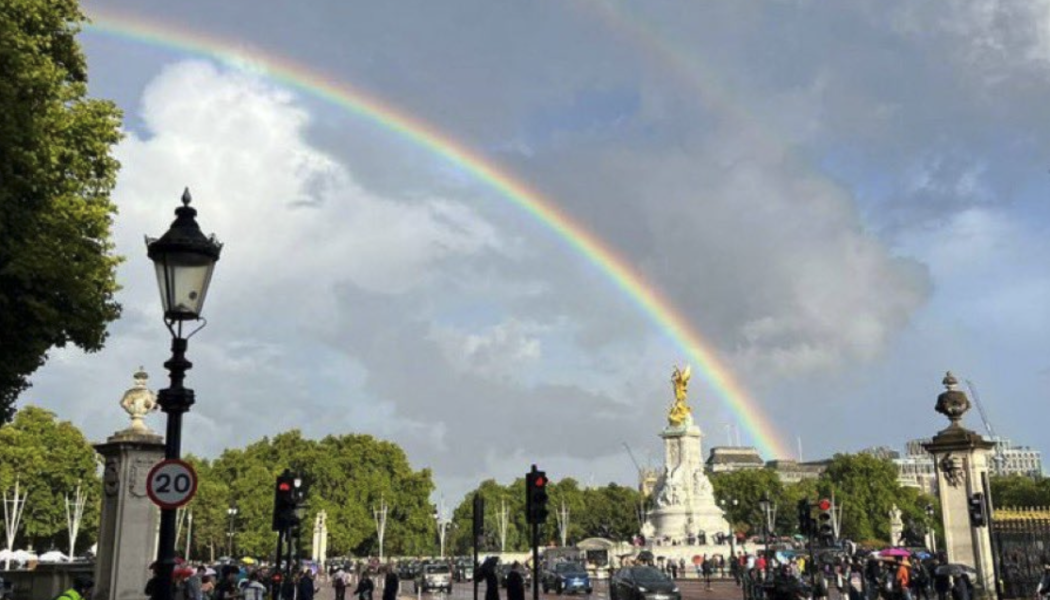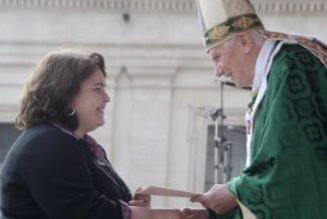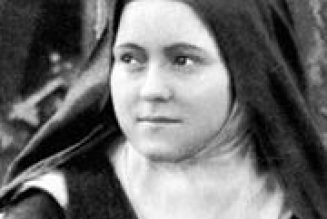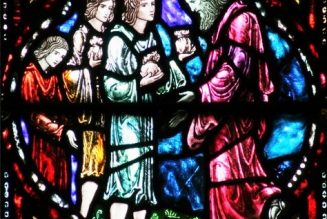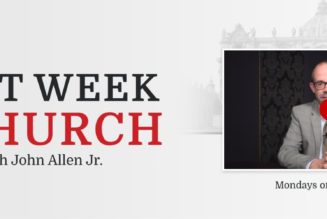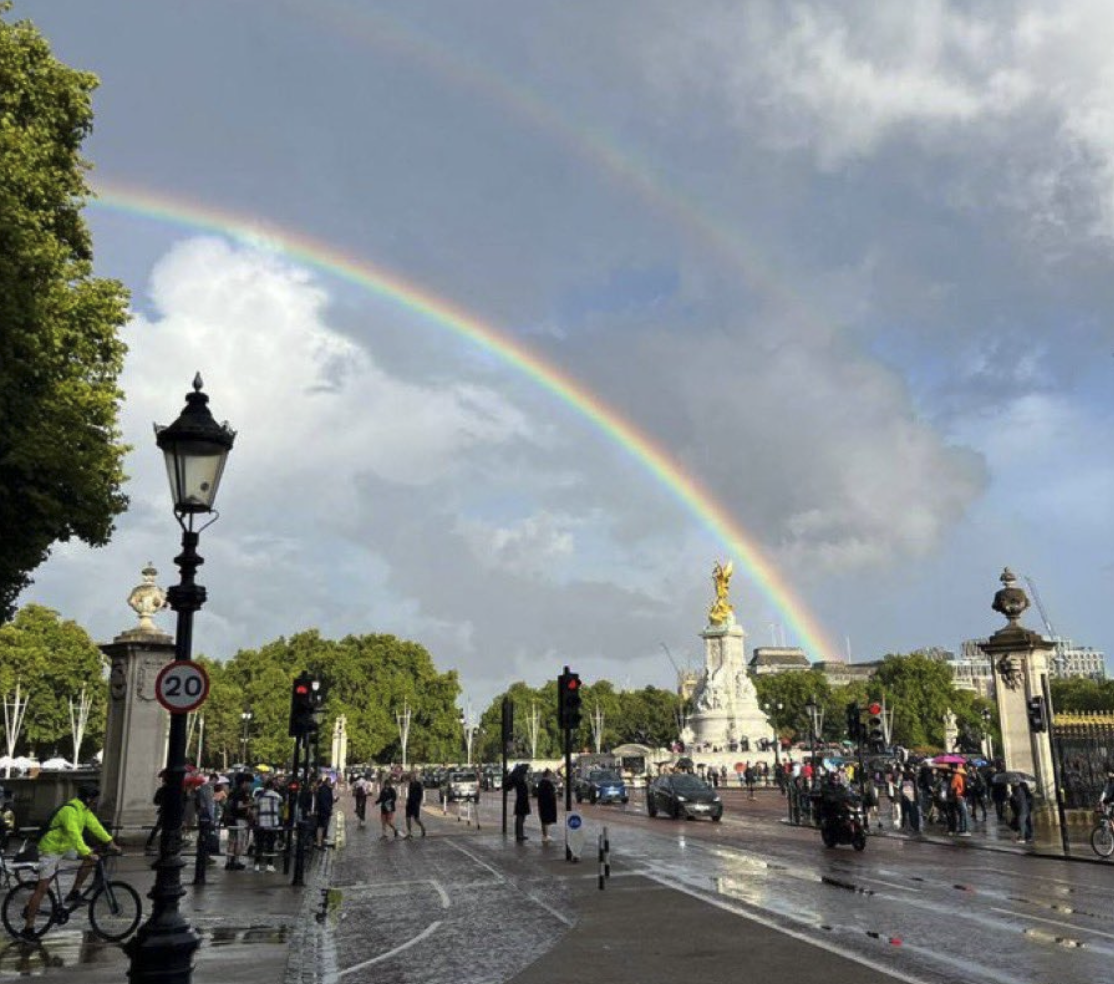
"Although we are capable of great acts of kindness, history teaches us that we sometimes need saving from ourselves … God sent into the world a unique person, neither a philosopher nor a general … but a Saviour, with the power to forgive."
Queen Elizabeth II, Christmas 2011 pic.twitter.com/qdy6vsW6fu— Bernard N. Howard (@BernardNHoward) September 8, 2022
\n","url":"https://twitter.com/BernardNHoward/status/1567939801478828040","resolvedBy":"twitter","floatDir":null,"providerName":"Twitter","customThumbEnabled":false}” data-block-type=”22″ id=”block-yui_3_17_2_1_1662728929206_50561″>
“Although we are capable of great acts of kindness, history teaches us that we sometimes need saving from ourselves … God sent into the world a unique person, neither a philosopher nor a general … but a Saviour, with the power to forgive.”
Queen Elizabeth II, Christmas 2011 pic.twitter.com/qdy6vsW6fu— Bernard N. Howard (@BernardNHoward) September 8, 2022
The Queen is dead. God save the King.
It’s hard to edit the religion content out of that equation. However, when journalists are asked to deal with the death of the queen who was, it can be argued, the most famous woman of the past 100 years, there are plenty of important, “real,” issues to deal with other than the state of her soul and her Christian faith.
I spent most of yesterday afternoon and evening watching the BBC Global coverage of the death of Queen Elizabeth II, as opposed to, shall we say, American “telly.” The BBC focused on the death of one of the greatest, if not “the” greatest, monarchs in Great Britain’s history. There were many references to her Christian faith. American television, for the most part, offered discussions of the death of a great celebrity. If I have been too harsh with that judgment, please send me some quality URLs.
How to approach this totally justified tidal wave of coverage? I think the easiest way to search out the religion-beat content is with two specific online searches.
First, search Google News for “Queen Elizabeth” and “Christmas.” Elizabeth the Great was known, of course, for her dignified and timely Christmas addresses — an essential part of the season for Brits and those who love all things British. The vast majority of the mainstream-media obits for the queen contain references to her Christmas talks — sort of.
What did she say in these very personal messages? That’s the key.
This leads to my second Google News search, for “Queen Elizabeth” and “Christian.” This is where the mainstream press — unless I have missed something, somewhere — offer, well, something like this. In the religious press, readers will find many, many pages of content, such as this feature from Premier Christianity, a niche UK religion website: “Queen Elizabeth II served Christ.”
There was, however, this Washington Post feature with a hopeful title: “Queen Elizabeth II, in her own words: Her most memorable remarks.” After all, it did include a section with this title: “Annual Christmas speeches.” These talks were, readers are told, “peppered with words of wisdom, faith and occasionally personal reflections from the nonagenarian.” However, this is what the Post offered:
“In the old days the monarch led his soldiers on the battlefield and his leadership at all times was close and personal. Today things are very different,” she said in her first televised Christmas broadcast in 1957. “I cannot lead you into battle, I do not give you laws or administer justice but I can do something else, I can give you my heart and my devotion to these old islands and to all the peoples of our brotherhood of nations.”
In 1974, her Christmas message alluded to violence in Northern Ireland and in the Middle East, and she encouraged people globally to seek the path of peace and reconciliation. “We may hold different points of view but it is in times of stress and difficulty that we most need to remember that we have much more in common than there is dividing us,” she said.
In 2002, despite celebrating 50 years on the throne during her Golden Jubilee, she also mourned the death of her mother and sister within a few weeks of each other. In her Christmas message that year, she reflected on the need for humanity amid crisis.
“Our modern world places such heavy demands on our time and attention that the need to remember our responsibilities to others is greater than ever,” she said.
What kind of advice and solace did the queen offer in hard times?
Contrast the Post summary with this language from her majesty’s 2011 talk, as transcribed by the BBC.
Jesus was born into a world full of fear. The angels came to frightened shepherds with hope in their voices: ‘Fear not’, they urged, ‘we bring you tidings of great joy, which shall be to all people. ‘For unto you is born this day in the City of David a Saviour who is Christ the Lord.’
Although we are capable of great acts of kindness, history teaches us that we sometimes need saving from ourselves — from our recklessness or our greed.
God sent into the world a unique person — neither a philosopher nor a general, important though they are, but a Saviour, with the power to forgive.
Forgiveness lies at the heart of the Christian faith. It can heal broken families, it can restore friendships and it can reconcile divided communities. It is in forgiveness that we feel the power of God’s love.
That’s a bit more specific, isn’t it? Year after year, Queen Elizabeth stressed that her faith was at the heart of her life and work. Was this a valid and important part of her (news) story? Check out the obits from USA Today and the Associated Press. The London Times did include a reference to the deity, since it is hard to edit that out of the phrase “So help me God.”
All day long, the BBC showed — over and over — the ending of the famous address in which the 21-year-old Elizabeth, before becoming queen, offered a solemn vow to serve her people. Here is the full text and here are the final cadences:
I declare before you all that my whole life whether it be long or short shall be devoted to your service and the service of our great imperial family to which we all belong.
But I shall not have strength to carry out this resolution alone unless you join in it with me, as I now invite you to do: I know that your support will be unfailingly given. God help me to make good my vow, and God bless all of you who are willing to share in it.
How did the world’s most powerful newspaper — The New York Times — summarize that profound and symbolic moment in her life? Here is the full reference from the main obit:
In 1947, Princess Elizabeth turned 21 during a royal tour of South Africa, then part of the British Commonwealth, and, in a radio broadcast to Britain’s empire and former colonies, she declared to her listeners that “my whole life, whether it be long or short, shall be devoted to your service and to the service of our great imperial family to which we all belong.”
She continued, “But I shall not have strength to carry out this resolution alone unless you join in it with me, as I now invite you to do.”
Once again, it is interesting to note what was retained and what was removed. Instead of a Christian vow, readers are offered a kind of mini-humanist, ultimately political pledge of allegiance.
Religion News Service, to its credit, updated a feature written three months ago to offer readers an overview of the queen’s religious duties and the heritage of that work. This included, of course, some references to her faith, including some explicitly Christian quotations from a Christmas address. Here is a sample of that coverage:
… Archbishop of Canterbury Justin Welby released a statement noting the “signs of a deeply rooted Christian faith” in the queen’s life: her courage even as she mourned her husband, Prince Philip, the Duke of Edinburgh, who died in April 2021; her reminders in the darkest days of the COVID-19 pandemic that darkness cannot overcome light; her service to “her people and her God.”
“As a faithful Christian disciple, and also Supreme Governor of the Church of England, she lived out her faith every day of her life. Her trust in God and profound love for God was foundational in how she led her life – hour by hour, day by day,” Welby wrote.
While Defender of the Faith has been an inherited title and little more, Elizabeth II embraced it and in recent years made it her own, speaking very openly about her faith and explaining how it provided the framework of her life.
She did this mostly through her annual Christmas message, a tradition begun by her grandfather, George V, in 1932, and continued by her father. Her early Christmas Day broadcasts were platitudinous — the holidays as an occasion for family was a frequent theme. In 2000, however, she spoke of the millennium as the 2,000-year anniversary of the birth of Jesus Christ, “who was destined to change the course of our history.”
She went on to speak very personally and frankly about her faith: “For me the teachings of Christ and my own personal accountability before God provide a framework in which I try to lead my life. I, like so many of you, have drawn great comfort in difficult times from Christ’s words and example.” Similar sentiments have been aired at Christmas ever since.
The coverage of the queen’s death will, of course, continue for at least two weeks. It will be interesting to see who — other than the Archbishop of Canterbury — speaks at her funeral liturgy.
However, let me end with two images that, at this point, are matters of speculation.
At the time of the death of Prince Philip Mountbatten-Windsor, I wrote a post — linked to a podcast — with this headline: “The long, complex and mysterious life (and faith) of Prince Philip of Greece.” It opened with a reference to some memorable scenes — from the second season of the Netflix series called “The Crown” — focusing on a meeting between the queen and the young Billy Graham. Here is what I wrote at that time:
In 1955, while the Rev. Billy Graham was in Scotland leading a crusade in Glasgow, the evangelist received a note from Buckingham Palace inviting him to preach on Easter morning in the private chapel at the Royal Lodge. It’s a poignant scene, especially when paired with another in which Graham visits the queen to discuss an important subject — the need to forgive others.
In the chapel, Graham discusses Christian faith in highly evangelical language, describing the need to have a personal encounter with Jesus Christ. Queen Elizabeth listens attentively. Prince Philip is clearly bored, upset, disturbed, offended, embarrassed or all of the above.
Was Prince Philip struggling with guilt linked to his rumored infidelities? What is happening in his head and heart? …
For millions of people, “The Crown” offered the dominant image of Prince Philip — the tall, handsome consort of the queen best known for his faults and weaknesses. … But it was also obvious that something important happened during this royal couple’s 73 years of marriage. Somehow, they grew together, doing the best they could to handle the pressures of royal life and the searing spotlight on their four children and, eventually, their grandchildren and great-grandchildren.
It’s hard to imagine the long life of Queen Elizabeth without her marriage playing a central role. My question, for reporters: Does anyone know if — quite literally — her Christian faith saved this marriage? Did this help Prince Philip regain his own faith, which appears to have grown stronger in the second half of his life.
In “The Crown,” images and speculation were enough. That will not work, for journalists. But it is a subject worth investigating.
Finally, an Anglican priest who I have known for decades is searching to find out if the following anecdote — which is circulating once again, for obvious reasons — is real or fiction. Here is the reference:
ONE of the chaplains of her late Majesty, Queen Victoria, had been preaching on the Second Coming of the Lord, and afterward, in conversation with the preacher, the Queen exclaimed: ” Oh! how I wish that the Lord would come in my lifetime! “
” Why,” asked the chaplain, “does your Majesty feel this very earnest desire?”
The Queen replied with quivering lips, and her whole countenance lighted up by deep emotion:
” I should so love to lay my crown at His feet.”
In this case, I hope that authorities higher than Snopes.com will seek to fact-check these kinds of personal references.
FIRST IMAGE: The double rainbow over Buckingham Palace at the time of the announcement of the death of Queen Elizabeth II. From many options on social media.
Join Our Telegram Group : Salvation & Prosperity
